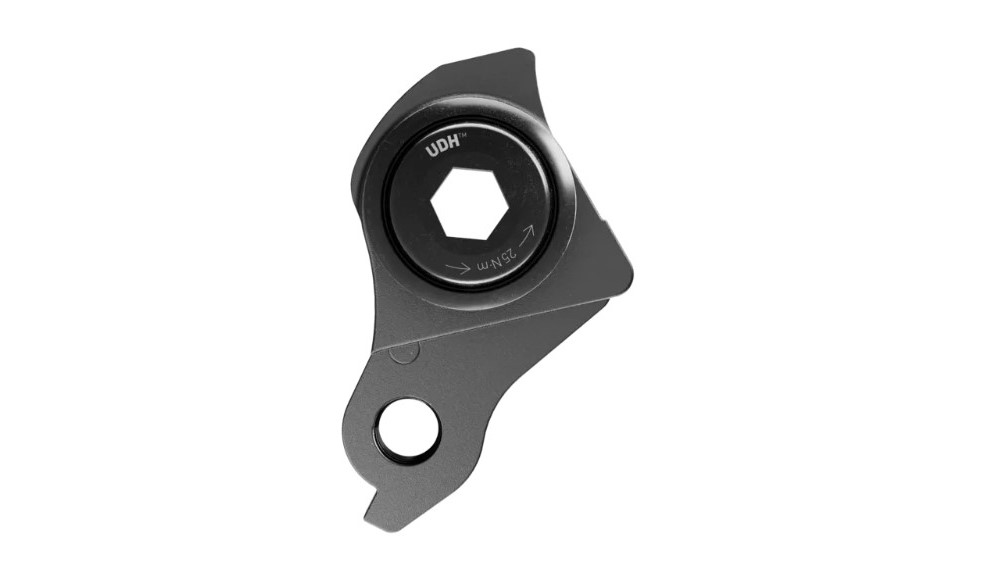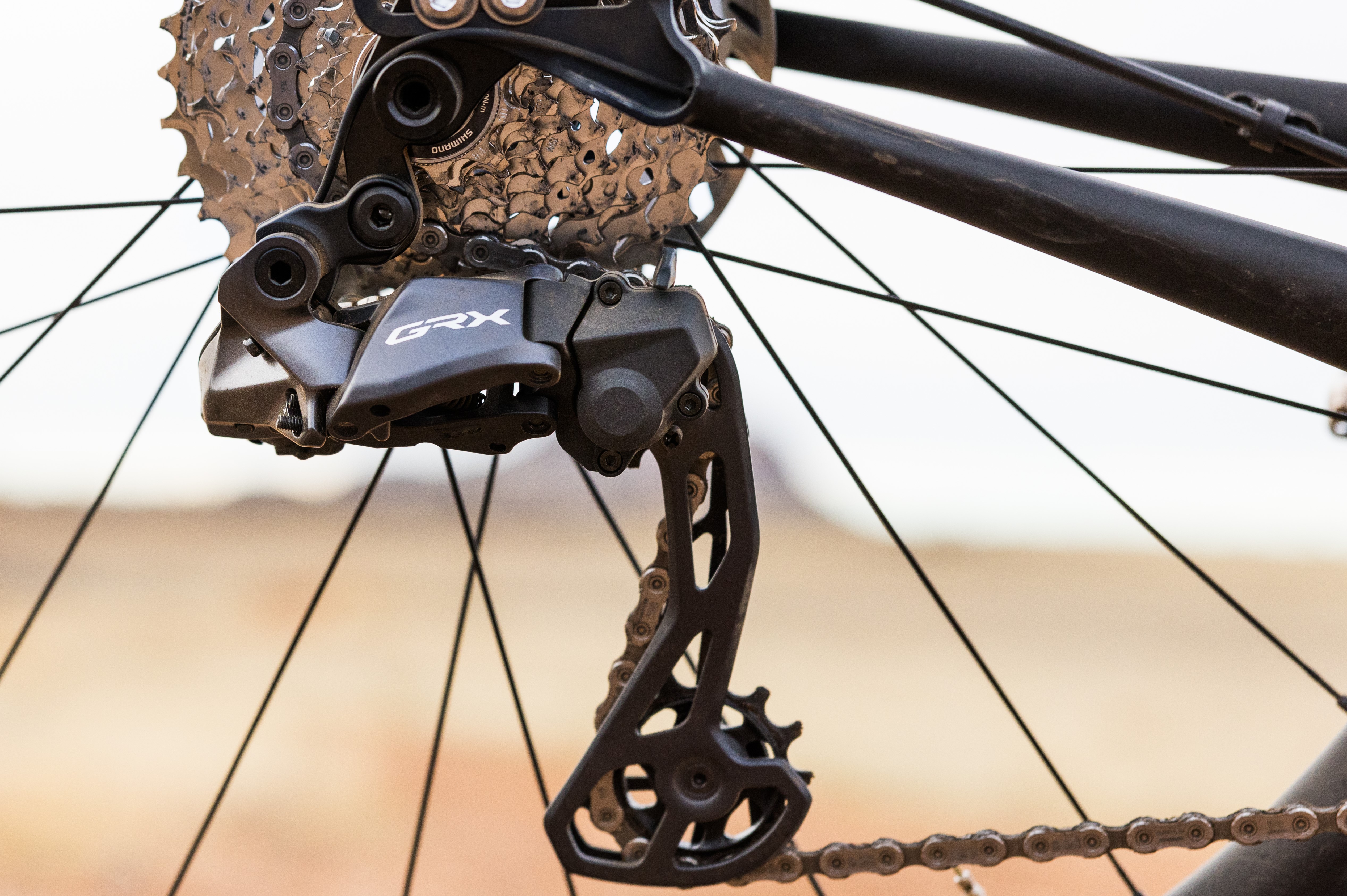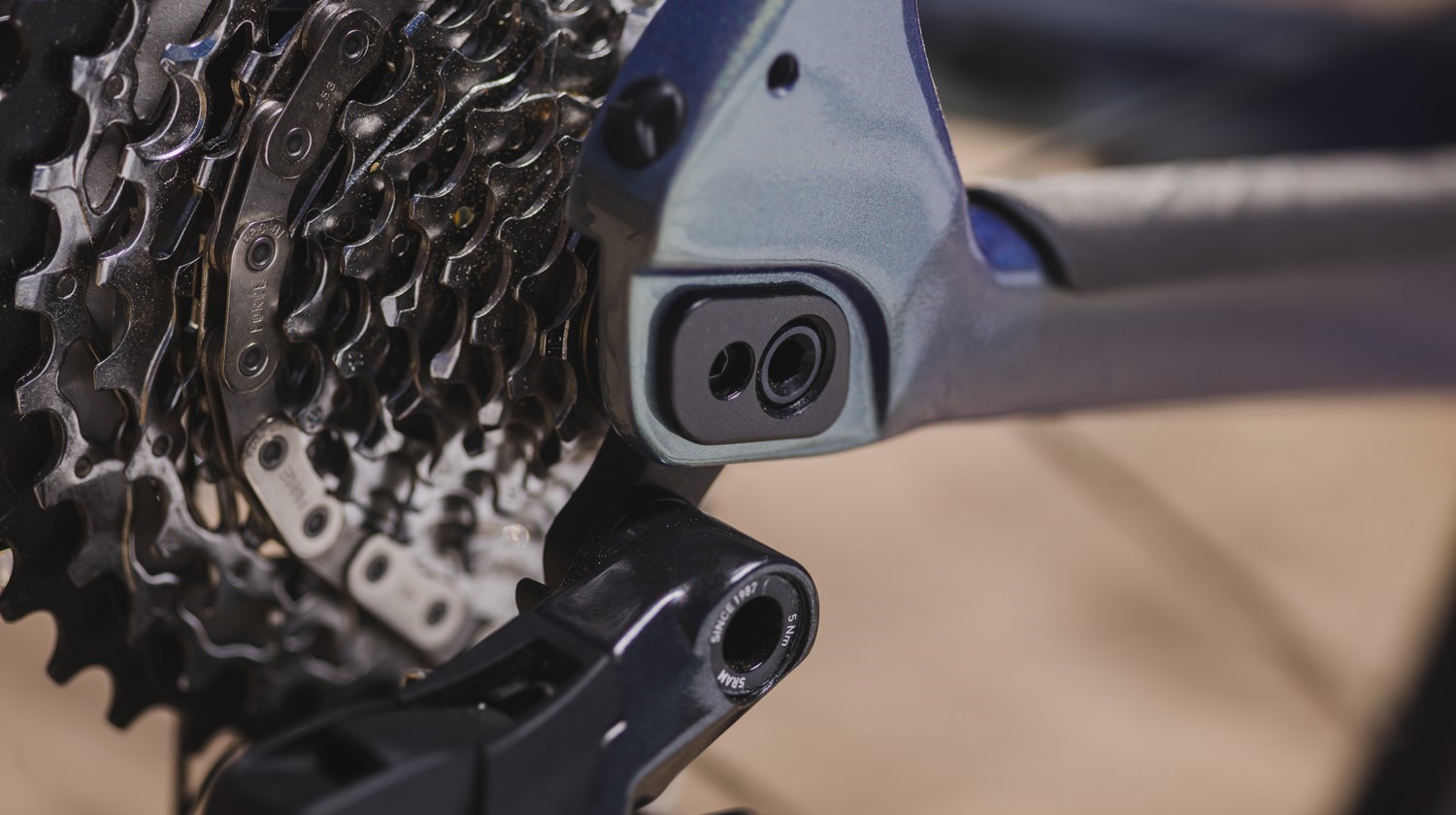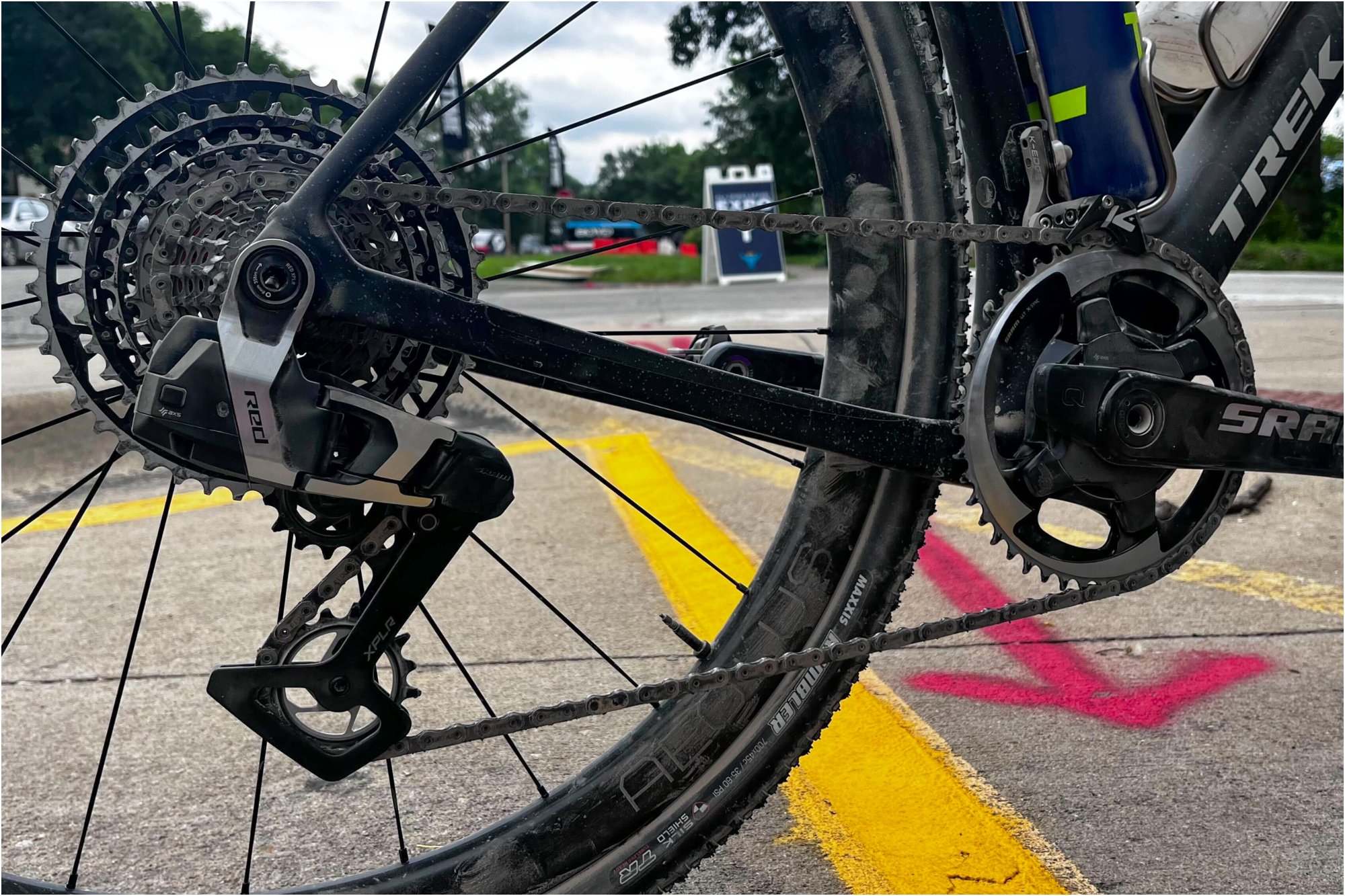What is UDH and why does it matter to me?
Is an end to the hunt for a replacement mech hanger in sight?


If you’ve ever had to replace a bent or broken rear derailleur hanger, you’ll know how hard it is to find a spare. Every bike seems to have a unique design.
But there may be a solution to this problem in the form of SRAM's UDH rear hanger. It also opens up an interesting view on where SRAM sees its derailleur tech heading, in the form of its Transmission derailleur as seen in the unreleased 1x13-speed SRAM Red AXS XPLR groupset that we spotted at Unbound. More on this later.
Why UDH?
UDH stands for Universal Derailleur Hanger and it’s SRAM’s technology that aims to provide a single hanger design that manufacturers can adopt for their bikes, with advantages over the typical mech hangers, which bolt onto the bike’s frame below the rear axle.
UDH has some crashproofing built in, as the hanger can shift backwards slightly on impact. This isn’t the case for most derailleur hanger designs, which have a rigid connection to the bike’s dropout. It’s also designed to rerail a chain if it falls off the outside of the smallest sprocket.
A bike does have to be designed to accept UDH, so it still won't fit the majority of current road and gravel bike frame designs. If your bike isn't UDH compatible, you'll still have that hunt for a replacement hanger.
Not just for MTBs

UDH looks to simplify finding a replacement derailleur hanger
UDH was originally devised for mountain bikes, but its adoption is now spreading to road and gravel bikes too.
The latest Gen 8 Trek Madone, for example, has switched from a Trek own-design derailleur hanger to use the UDH standard.
The latest race content, interviews, features, reviews and expert buying guides, direct to your inbox!
Trek’s director of road bikes, Jordan Roessingh, explains why: “One of the concepts that we’ve been pursuing across all Trek road bikes is really standardizing things that can be shared components across more of our platforms in the Trek road family.
“That started with the T47 bottom bracket system that’s across all the Trek road platforms now. For the new Gen 8 Madone, that’s extended to the UDH and the Universal Headset System.”
Trek isn’t the only brand to have used UDH for its road or gravel bikes. The Canyon Grail and bikes from Lauf, Cervélo, 3T, Ridley and others are designed to use a UDH derailleur hanger. Adoption for drop bar bikes is centered on gravel, but as Trek’s decision to use UDH on the Gen 8 Madone indicates, it’s moving to the road too.
Why are bike manufacturers focusing on UDH?
“For us that was really an intuitive decision to say these parts don’t need to be differentiated for the performance of the product, but the rider and the dealers are going to benefit from being able to find those parts much easier and making them interchangeable between different Trek road platforms,” says Roessingh.
It does seem that bike and component makers are finally beginning to address the proliferation of incompatible parts and its effect on both replacement availability and on the stock that a typical bike shop needs to keep.
Other rationalisation projects include Shimano CUES, which increases consistency between Shimano's 9, 10 and 11-speed groupsets. Bike makers are also focusing more on T47 or BSA bottom bracket standards, rather than the Tower of Bottom Bracket Babel of a few years ago.
Compatibility conundrum

Direct Mount removes the short B-Link, seen here, between the derailleur and the mech hanger
Not all brands are on-board with UDH though. One issue is compatibility with the Shimano Direct Mount derailleur hanger standard. Direct Mount removes one of the linkages, called the B-Link, which sits between the derailleur itself and a normal derailleur hanger, by positioning the derailleur-to-hanger connection further rearward and lower than with a standard hanger.
By taking out the B-Link, Shimano claims that Direct Mount ensures more precise derailleur alignment – one of the issues that UDH is also designed to address. Direct Mount is also used by Campagnolo.
So although you can use UDH with Shimano and Campagnolo derailleurs, unless you buy a UDH Direct Mount hanger (Wheels Manufacturing sells one), you’ll need to include the B-Link to use a Shimano Shadow-style derailleur on a UDH bike frame.
UDH does have some quirks as well, at least for the home mechanic. SRAM specifies tightening the derailleur to 20Nm. The bolt is reverse threaded though, and not all torque wrenches can work in an anticlockwise direction as well as clockwise. So you might need a bike shop with the correct tools to fit a new UDH hanger for you so that its rearward movement capability works correctly.

UDH compatibility with a rear axle flip chip isn't easy to achieve
UDH doesn't have easy compatibility with Flip Chip rear axles either, such as that on the new Giant Revolt.
UDH is also primarily aimed at compatibility with carbon fiber bike frames with 12mm diameter thru-axles. Makers of metal frames report more difficulty producing an interface to the dropout that doesn’t look unsightly or over-heavy.
The end of the bent mech hanger?

T-Type derailleurs attach to both sides of a UDH-compatible dropout
The standardisation of the derailleur-to-frame interface with UDH opens up another innovation that SRAM has already applied to its mountain bikes and that looks set to find its way to the road and to gravel.
Transmission (or T-Type) MTB rear derailleurs dispense with the mech hanger completely, with the derailleur attaching directly to both sides of the rear dropout. This does require the same dropout spacing and shape as UDH.
Among the advantages cited by SRAM are the precise alignment of the derailleur and the cassette, making limit screws and B-link adjustment things of the past. The connection is also very strong. SRAM has videos of its staff standing on the derailleur and it still shifts afterwards.
Transmission derailleurs look to be coming to drop bar bikes too, at least to 1x gravel bikes. At the 2024 Unbound gravel race, we spotted an unreleased 13-speed SRAM Red AXS XPLR rear derailleur, helping to explain the absence of a 1x set-up when SRAM announced its update of 2x12-speed Red AXS.
If Red AXS XPLR 13-speed is to be launched to the public, we can expect it to carry top-end pricing; although, SRAM has a history of trickling its latest tech down quite rapidly to its lower-tier groupsets.
Will we see a 2x13-speed T-Type SRAM Red AXS? It’s not implausible in the future, although it will probably await the adoption of UDH on a greater number of road bikes and be sold alongside a derailleur with a standard frame connection, so that riders without a UDH frameset are catered for.
SRAM's top-tier MTB groupsets now use the T-Type frame interface. If SRAM follows the same migration pathway for road and gravel, riders choosing bikes with non-UDH frames may in future find themselves locked out of the brand's flagship derailleur systems.
We’re also likely to see another crop of 1x road bikes on sale, since the ever-growing number of sprockets reduces the jumps between ratios which were a turn-off with 11 and 12-speed 1x groupsets for road use.
Paul started writing for Cycling Weekly in 2015, covering cycling tech, new bikes and product testing. Since then, he’s reviewed hundreds of bikes and thousands of other pieces of cycling equipment for the magazine and the Cycling Weekly website.
He’s been cycling for a lot longer than that though and his travels by bike have taken him all around Europe and to California. He’s been riding gravel since before gravel bikes existed too, riding a cyclocross bike through the Chilterns and along the South Downs.
